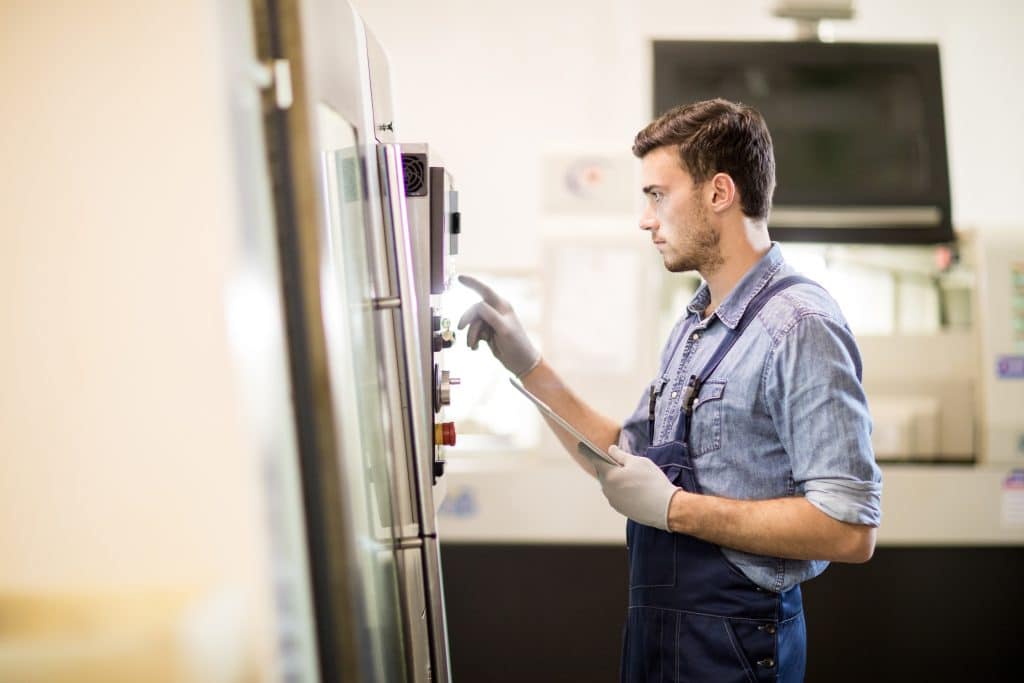Industrial Chillers
The Right Furnace Chiller for your Business
Industrial chillers are used in a wide variety of applications that call for cooling machinery or end products produced by a high heat manufacturing process. Generally, chillers circulate cold liquid through process equipment or in heat transfer plates that directly contact the equipment to be cooled.
Liquid-based chiller technology is used in many different applications, including tool-and-die cutting, some food and beverage production, chemical manufacturing, industrial processes involving lasers, semiconductor production, and much more.
In the case of furnace chillers, this can be accomplished by using water or a water and glycol solution to transfer thermal energy away from areas that need to be cooled via conduction.
Inefficiencies and Waste Heat
Heat is generated as a byproduct of mechanical inefficiency. Failure to effectively remove this excess heat will allow it to build up over time, which can lead to equipment failure or damage. This in turn results in process shutdowns, lost production time, and may require repair or replacement of heat-damaged equipment.
Furnaces which generate a high amount of heat also experience similar inefficiencies, usually in the form of radiant thermal energy escaping combustion chambers and ducting. If this excess waste heat isn’t properly mitigated, it can lead to equipment failure or worse.
How Chillers Work
Industrial chillers ensure consistent operating temperatures for equipment or processes. In a typical process cooling design, a pumping system circulates refrigerant liquid from the chiller to the equipment or process that requires cooling.
This cold fluid removes heat, usually through conduction contact via plates or piping, and returns the warmed fluid (or gas, if the heat is sufficient to convert the liquid) to the chiller.
There are many types of cooling liquids or refrigerants, and the kind used depends largely on the amount of heat that needs to be removed or reduced and the overall temperatures generated by the equipment to be cooled.
Most chillers operate on the principle of compression and phase change. Low-pressure liquid passes through an evaporator, where it is changed to a low-pressure gas through heat from the process being cooled.
This low-pressure gas passes into a compressor unit, which converts it to a high-pressure gas. The high-pressure gas then flows into a condenser, where heat is removed to convert the gas to a high-pressure liquid. This liquid then flows through an expansion valve, which controls flow into the evaporator, and the cycle begins again.
Types of Chillers
Chillers are often either liquid or air-cooled, though the specific mechanical action can differ greatly depending on the application. Air chillers move ambient air via fans across a condensing coil.
Liquid chillers use a pump that circulates fluid through a condensing unit and out to a cooling tower that releases heat. Evaporative condensed chillers combine features of both liquid and air-cooled processes by circulating cooling liquid through wet condenser tubes which are cooled by mechanical fans.
Thermal Spray Chillers
In thermal spray applications, the use of a chiller is critical to control temperatures required for high-quality process and final product. The thermal spray process coats a surface with fine particles expressed through a stream of working gas to create a uniform finished coating. The process can involve plasma or arc spray, as well as High-Velocity Oxygen Fuel, or HVOF, spray.
The Right Chiller for Your Needs
KKT Chillers can help you determine the right fit for your application, whether you are looking for a furnace chiller, a chiller to be used with thermal spray applications, or for any other process which requires efficient and accurate removal of excess heat.
